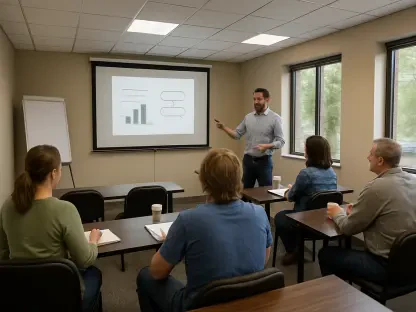In a recent gathering that drew significant attention from the Whitefish community, the local school board addressed two critical matters shaping the future of education in the district and beyond: a major expansion project at Whitefish High School and the persistent challenge of equitable funding for Montana’s public schools. These discussions underscored the delicate interplay between addressing immediate infrastructure needs and confronting systemic disparities that affect educational quality across the state. With detailed updates on construction timelines and a commitment to community involvement, the board showcased a proactive stance on local improvements. At the same time, a deep dive into funding inequities revealed historical struggles and current legal actions that could redefine resource allocation for districts statewide. This meeting illuminated the district’s dedication to balancing tangible progress with advocacy for broader reform, setting a compelling stage for the decisions ahead.
High School Expansion Initiative
Project Milestones and Timelines
The ambitious expansion at Whitefish High School is poised to break ground on March 22, 2026, strategically planned during spring break to minimize interruptions for students and faculty. Significant strides have already been made, including the completion of asbestos testing in areas marked for demolition and the establishment of essential infrastructure such as access pathways to support the upcoming construction phases. The board reviewed the next steps, which include the development of detailed construction documents based on finalized designs, as well as preparations for bidding and permitting processes. Luke Hamman, the owner’s representative, emphasized efforts to maintain access to the school’s track until after the last hosted meet on April 13, with contingency plans under consideration for practices to potentially relocate to nearby Columbia Falls. This careful scheduling reflects a commitment to balancing educational activities with the demands of a large-scale project, ensuring minimal disruption while keeping the expansion on course for timely completion.
Beyond the immediate timeline, the board also approved a contract modification with A&E Design to incorporate deferred maintenance tasks into the expansion scope, addressing long-standing facility needs. These tasks range from replacing soffits and gutters to updating gym equipment and repairing science room countertops, alongside exterior painting and targeted roof fixes. Some of these items may be categorized as bid alternates to manage expenses effectively, demonstrating a pragmatic approach to fiscal responsibility. Hamman also noted the challenge of integrating sustainability measures, such as installing a new boiler, while keeping costs in check. Decisions on such upgrades are being evaluated individually to prioritize the district’s long-term interests. This multifaceted strategy highlights how the project not only aims to expand capacity but also to enhance the school’s overall condition, tackling overdue repairs within the framework of a larger vision for improvement.
Community Engagement and Environmental Considerations
A key component of the high school expansion project is fostering transparency and dialogue with the Whitefish community, evidenced by a public meeting scheduled for December 3 at the high school from 5:30 to 6:30 p.m. This event is designed to provide residents with direct access to designers and project team members, offering a platform to ask questions, share concerns, and gain insight into the project’s progress. Such initiatives underscore the district’s dedication to inclusivity, ensuring that community voices play a role in shaping the future of the school. By facilitating this interaction, the board aims to build trust and maintain accountability, recognizing that public support is vital for the success of such a significant undertaking. This meeting represents more than just an update; it’s an opportunity to align the project with the community’s expectations and needs, reinforcing a collaborative spirit.
Sustainability emerged as another focal point during discussions, with the board grappling with how to balance environmental responsibility against budgetary constraints. Public concerns about energy efficiency and long-term cost savings were acknowledged, particularly in relation to major upgrades like heating systems. While the desire for sustainable solutions is clear, the financial implications of such choices require careful consideration, as highlighted by Hamman during the meeting. The approach to deferred maintenance tasks also ties into this theme, with efforts to address critical repairs like roofing and exterior updates being weighed for their impact on both functionality and efficiency. This nuanced decision-making process illustrates the board’s intent to create a facility that not only meets current demands but also stands the test of time, reflecting a forward-thinking mindset amid practical limitations. The emphasis on sustainability signals a broader awareness of the school’s role in promoting responsible resource use for future generations.
Addressing Statewide Educational Funding
Legal Background and Persistent Disparities
The board’s agenda also included a critical examination of equitable funding for Montana’s public schools, prompted by a presentation from Andres Haladay of Upper Seven Law regarding a recent lawsuit initiated by Missoula County Public Schools. This legal challenge contends that the state’s current funding system is unconstitutional due to significant inequities that hinder some districts’ ability to provide quality education. Haladay offered a historical perspective, referencing landmark lawsuits from the late 1980s and early 2000s that exposed stark disparities, often leaving rural districts with limited tax bases at a disadvantage. While those cases led to reforms like improved resource sharing and legal standards for funding equality, many schools still face challenges in securing adequate resources. This ongoing struggle highlights a systemic issue that transcends local boundaries, affecting the state’s ability to ensure uniform educational opportunities for all students.
Further delving into the implications of past legal actions, Haladay pointed out that despite incremental funding increases mandated by court rulings to account for inflation and rising costs, the gap between state contributions and actual needs remains substantial. The Montana Supreme Court’s 2005 directive to define “quality” in education set a precedent, yet disparities persist, particularly for districts lacking community financial support through bonds. For Whitefish, while local backing has enabled some capital improvements, the broader question of whether state funding—covering roughly 80% of needs—suffices for comprehensive educational quality lingers. This discussion revealed a complex interplay of historical progress and current shortcomings, with the Missoula lawsuit seen as a potential catalyst for renewed focus on equity. The board’s engagement with these legal and financial nuances underscores the urgency of addressing funding gaps to uphold constitutional guarantees of equal education across Montana.
Local Implications and Strategic Concerns
At the local level, board members expressed apprehension about whether the state’s base funding adequately supports Whitefish’s goals, such as enhancing academic programs, increasing teacher compensation, and planning for future infrastructure needs. Trustee Darcy Schellinger raised questions about the timing of the Missoula lawsuit, pondering if it might divert attention from concurrent legislative efforts and advocacy initiatives, especially with a state commission studying public school funding ahead of the 2027 legislative session. Haladay countered that the legal action could instead intensify focus on reform during these discussions. This debate reflects a broader tension between immediate legal strategies and long-term policy solutions, with the board weighing how best to advocate for change while managing local priorities. The concern over funding adequacy remains a pivotal issue, as it directly impacts the district’s capacity to deliver on educational promises.
Adding to the complexity, Trustee Rayne Beach sought clarity on Whitefish’s funding status, acknowledging the community’s successful bond passages for physical upgrades but highlighting budgetary constraints that limit other areas of growth. Superintendent Dave Means pointed to a chronic shortfall in special education funding as a specific pain point, a challenge echoed across many districts. Schellinger also noted significant variations in educational quality within a short geographic radius, tying these disparities to the constitutional mandate for equitable access. These local insights reveal how statewide funding issues manifest in tangible ways, affecting everything from specialized student services to overall school performance. The board’s dialogue captured a blend of cautious optimism about community support and concern over systemic limitations, emphasizing the need for both local resilience and state-level intervention to bridge existing gaps in educational resources.








